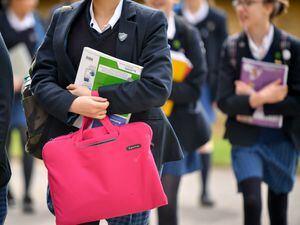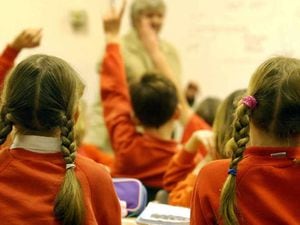All secondary school pupils in Wales could be back in classroom after Easter
Education Minister Kirsty Williams said it was her preference for all children to return to school after the Easter break.

All secondary school students in Wales could be back in the classroom after Easter, depending on the coronavirus situation in the country, the Education Minister has said.
Kirsty Williams told a press conference in Cardiff that her “preference” would be for all children to return after the holidays, which begin on March 29, with the new term starting on April 12.
The youngest pupils, aged three to seven, began returning to face-to-face teaching from Monday along with some vocational learners who were back at college.
Most children have not been in school since December, when classes were switched online due to a steep rise in coronavirus cases.
The coronavirus incidence rate in Wales is currently 80 cases per 100,000 people – the lowest of the four UK nations.
All primary school pupils, as well as those in years 11 and 13 and those doing similar qualifications in colleges, will return from March 15 if the situation continues to improve.
Ms Williams said she wanted to see other learners, such as years 10 and 12, have “flexibility” around face-to-face teaching.
“Unfortunately for those learners in secondary settings or colleges, this won’t necessarily be a return to full-time on-site learning,” she said.
“However, we will do all that we can to support those learners because I know how anxious this time can be as they consider key decisions about their next steps in life.
“Last time I spoke at the press conference, I announced how our education staff will be tested twice weekly as part of our testing strategy.
“Today, I’m pleased to say that this will be extended to older year learners in years 11 to 13, and those in further education (FE) settings.
“This testing will be done through lateral flow devices, which mean they can be done from a learner’s home and which will assist with the planned returned for older pupils from March 15.”
Ms Williams stressed that educational premises were safe but the movement around them contributed to the R number, which is currently estimated to be between 0.6 and 0.9 in Wales.
She called on pupils, parents and carers to follow guidance and restrict contact with others to ensure that more children could return to school.
“We’re now working on how we can see the safe return of more learners to schools and colleges,” Ms Williams said.
“We will confirm the situation for other learners before the Easter holidays but I can tell you now that my preference is to get all learners back in school after the break.”
She added: “My preference is to get all children back to face-to-face teaching after Easter but whether the virus will allow us to do that, of course, is a different thing.
“Rather than just focusing on dates, we will be focusing on what the public health situation allows us to do.
“If we can go faster and the advice is we can go faster, believe me, I will grab that with both hands and we will get more children and young people back.
“But we have to be guided by the advice and the evidence to make sure that it is safe to do so and it doesn’t result in a deteriorating public health situation.”
Ms Williams was asked about plans in England to open all schools by March 8, meaning students in Wales may not return to classrooms for weeks after their counterparts over the border.
The minister replied that she had not received any new evidence or advice that supported a different approach to the one taken by the Welsh Government.
“Our phased and very careful approach is in line with the public health advice that I have received, and in fact, it’s also consistent with UK-wide advice,” Ms Williams said.
“If there is different information and new information available which contradicts our careful approach, then clearly we would want to consider that.”
Dr Chris Jones, deputy chief medical officer for Wales, told the press conference that the country was in a “fairly critical position”.
He said there was a “very substantial risk” of a large increase in cases, people being admitted to hospital, and deaths, if restrictions were relaxed too quickly.
“We know that opening schools will increase the R value, we know that will also depend to some extent on the presence of the new variants,” Dr Jones said.
“I think a cautious approach where we introduce the lowest risk children back to school first, evaluate the impact of that, that will teach us a great deal.”





